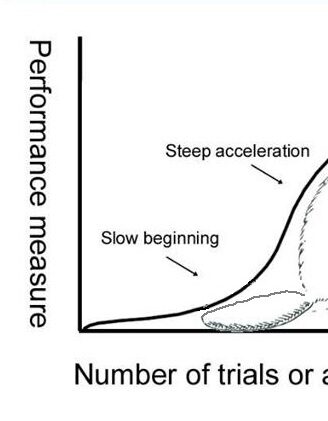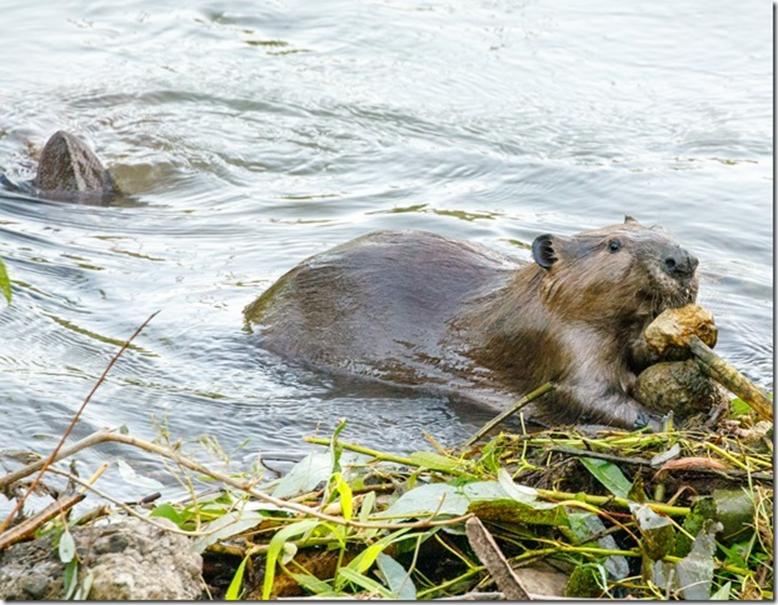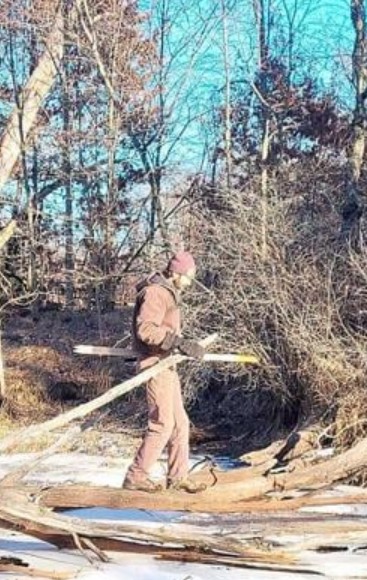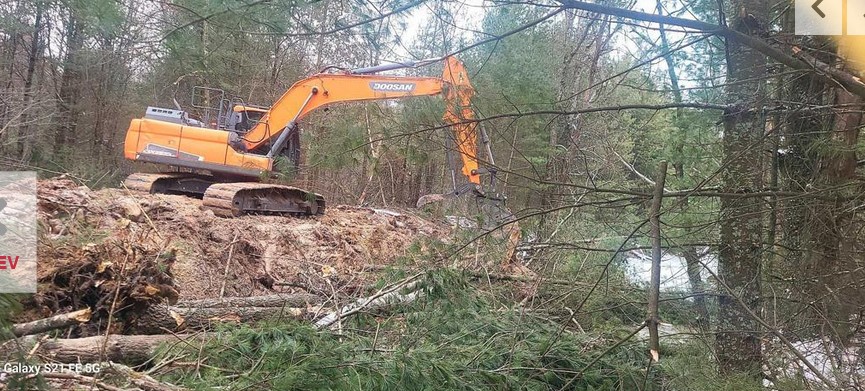I went through several mood swings reading this article yesterday. I thought I should bring you along for the ride. First the headline and the location brought me a burst of hopeful joy because Wisconsin is a place that thinks beavers ruin streams for fish and regularly blows up dams. They also think there are more of them now than in the fur trade, So lets just say they have lots of room to grow.
Opting for coexistence: Some Wisconsin landowners learn to live with beavers
Beavers can cause property damage, but research shows they positively impact the environment. Some landowners are ditching traps and dynamite to peacefully manage the nuisance.
 Katie McCullough loved Arizona winters, but hot summers could be a drag. During the pandemic summer of 2020, she once again loaded her RV and found respite in Dane County public parks. Why not make Wisconsin a half-year thing, she thought, with space for her and the pups?
Katie McCullough loved Arizona winters, but hot summers could be a drag. During the pandemic summer of 2020, she once again loaded her RV and found respite in Dane County public parks. Why not make Wisconsin a half-year thing, she thought, with space for her and the pups?
She soon met the neighbors — about 10 furry lodge dwellers. McCullough realized she had a beaver problem.
A growing chorus of advocates and ecological consultants are popularizing flow control devices, a solution to beaver flooding problems. They limit beavers’ damming behavior and reduce impacts on human infrastructure.
Hand-constructed with flexible plastic pipes and wire fencing, several types exist: pond levelers, culvert fences and decoy dams. Some bear trademarks like Beaver Deceiver and Castor Master.
They aim to reduce the desirability of potential dam sites, redirect beavers’ attention or “sneak” pond water away without attracting their notice. And they aren’t terribly common in Wisconsin.
I got so excited when I read this! Beaver dams in Wisconsin getting a flow device instead of being blown to smithereens!
I felt hopeful and kept reading.
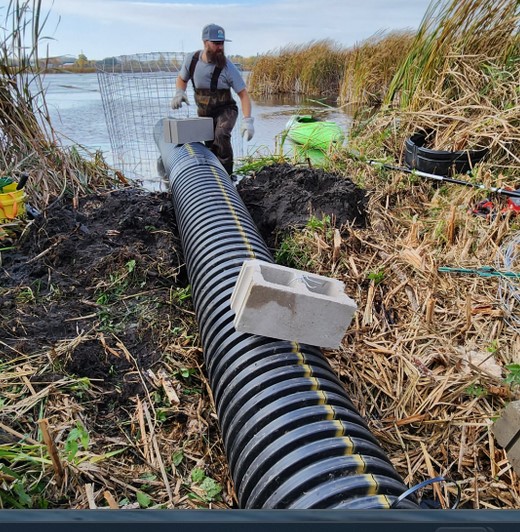 Modern devices control water height using a flexible plastic tube resting on a pond’s bottom. A cage surrounds the intake and prevents beavers from swimming close enough to detect flowing water, which researchers believe triggers their building itch. The other end of the tube passes through the dam, forming a permanent leak.
Modern devices control water height using a flexible plastic tube resting on a pond’s bottom. A cage surrounds the intake and prevents beavers from swimming close enough to detect flowing water, which researchers believe triggers their building itch. The other end of the tube passes through the dam, forming a permanent leak.
Installers say levelers, which cost $2,000 to $4,000, function for about 10 years, and annual maintenance takes less than an hour. They can modify setups to accommodate fish passage, narrow and shallow streams, large ponds and downstream beaver dams.
“No two beaver situations are the same,” said Massachusetts-based Beaver Solutions owner Mike Callahan, who has installed more than 2,000 flow devices and trains consultants. “The best solutions obviously are going to be ones that work for the beavers and that work for us.”
Wisconsin residents have constructed beaver pond levelers, as have the Department of Natural Resources and USDA. But state natural resources staff say they rarely receive inquiries.
Despite their simple design, obtaining state authorization to install a flow device often takes longer than other activities like small-scale dredging and riprap installation because Wisconsin lacks a standard pond leveler permit.
Okay, I’m glad you called Mike and spoke to him directly. Things are looking up.
A department staff member told McCullough’s contractor and restoration ecologist Clay Frazer — who has overseen multiple beaver-related projects in Wisconsin like mock beaver dams — that many landowners opt not to install them after learning of the challenges.
Hiring a consultant to navigate the process can be cost-prohibitive. McCullough’s bill exceeded $10,000, but a grant offset it.
Proponents say the meaty requirements usher landowners toward a lethal resolution, which Wisconsin’s beaver trapping rules seemingly favor.
Scientists have conducted virtually no peer-reviewed research evaluating the effectiveness of flow devices.
Virtually No Peer Reviewed studies? Of course there are. Glynnis study in 2018 was high quality and very substantial. So I tracked down the author and sent him a copy. And guess what he said?
Right I could only find ONE, So I wrote “Virtually”
Really? Is that what virtually means to you? I guess You could just have easily said that she had “Virtually no families of beavers on her property”. Or maybe that there were “Virtually” no reporters researching this article.”
Mind you he only found one study from 1922 on the Baileys invention. And only one woman who had tried this in her garden. And he didn’t his title his article
“In Wisconsin virtually no one tries coexistence“.
I can’t decide how frustrated to be with this article. On the one hand it is pretty good for the region and progress is progress,. On the other hand its soooooooo irritating. How many peer reviewed studies did he find of flow devices failing?
That would be none. Because when your second cousin Vernon told your neighbor Bob says its true you don’t need to do a study on it.
AmIright?



